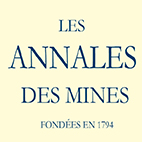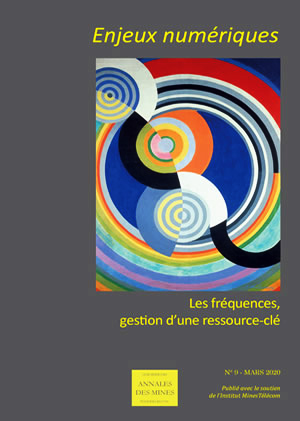|
 N° 9 - Mars 2020 - Les fréquences, gestion d’une ressource-clé N° 9 - Mars 2020 - Les fréquences, gestion d’une ressource-clé
5G Connectivity
Roberto VIOLA
The article highlights the importance of 5G Connectivity in the EU policy context as highlighted by European Commission’s 5G Action Plan. Without first-class communication networks, there will be no Digital Single Market. The Commission initiated visionary EU-funded research activities already in 2012, which led to the setup of the European 5G Public Private Partnership (5G PPP). In this context, an important policy objective of the Commission is pursuing its 5G spectrum roadmap, which has taken on board the view of the Member States, and serves the Gigabit connectivity targets of the Union. In order to make 5G deployment a success, it is essential to set the conditions ensuring timely access to the appropriate spectrum and allowing for the necessary investment in high-capacity networks. The European Electronic Communications Code promotes a more flexible and dynamic access to spectrum, through trading and leasing, but also sharing solutions, notably with regard to the spectrum licensing. However, the current availability of spectrum for 5G in all bands, low, mid and high, is still a challenge in Europe. Whereas the 700 MHz band has already been harmonised at EU level, there are also a legal obligations to assign upper bands in all Member States by end of 2020. The Commission will insist on the 2020 deadline and consider derogations only in very exceptional cases and if fully justified. We may not compromise 5G deployment and services take-up to the benefit of industry, society and the environment by the short-sighted objective of maximising auction revenues. While health matters remain a national competence, we need to engage with all relevant authorities to ensure that all decisions regarding radio exposure limits that go beyond the European and international precautionary levels are made in full knowledge of the evidence and of the likely consequences. The European Commission is following the developments, attentive to address important horizontal topics of efficient and sustainable spectrum management, establishing a favourable mind set to spectrum sharing - both by regulators and industrial players -, as well as contributing to the green transformation of other economic sectors. These topics should underlie a longer-term European spectrum strategy.
 Télécharger gratuitement l'article Télécharger gratuitement l'article
 Retour au sommaire Retour au sommaire
 N° 9 - March 2020 - The radio-frequency spectrum! Management of a key resource N° 9 - March 2020 - The radio-frequency spectrum! Management of a key resource
5G Connectivity
Roberto Viola
The importance of 5G connectivity is placed in the policy context of the 5G Action Plan approved by European Commission (EC). There will be no digital single market without first-class communication networks. The Commission was already sponsoring visionary EU-funded research activities in 2012, which led to the European 5G Public Private Partnership (5G PPP). An important policy objective for the Commission is to pursue its 5G spectrum roadmap, which takes account of the views of member states and serves the EU’s Gigabit connectivity targets. To make 5G deployment a success, the conditions have to be set for ensuring timely access to the appropriate part of the spectrum and mustering the investment necessary for high-capacity networks. The European Electronic Communications Code advocates a more flexible and dynamic access to the radio-frequency spectrum through trading and leasing; and it backs sharing solutions for spectrum-licensing. The available spectrum for 5G in all bands (low, mid and high) is still at issue. Whereas the EU has already harmonized the 700 MHz band, legal requirements call for assigning upper bands in all member states by the end of 2020. Insisting on this deadline, the EC considers exemptions only for very exceptional, fully justified cases. The short-sighted objective of maximizing auction revenues should not lead us to compromise the deployment of 5G. Although health remains a matter of national jurisdiction, discussions must be undertaken with all competent authorities to ensure that any decision regarding the exposure limit to radio-frequencies that goes beyond the precautionary European and international levels will be made in full knowledge of both the evidence and likely effects. The EC is following up on developments, attentive: to major horizontal topics having to do with an efficient and sustainable spectrum management; to molding an opinion among regulators and industries in favor of spectrum-sharing; and to the “greening” of other economic sectors. These topics should underlie a longer-term European spectrum strategy.
 Download full article Download full article
 Retour au sommaire Retour au sommaire
|




